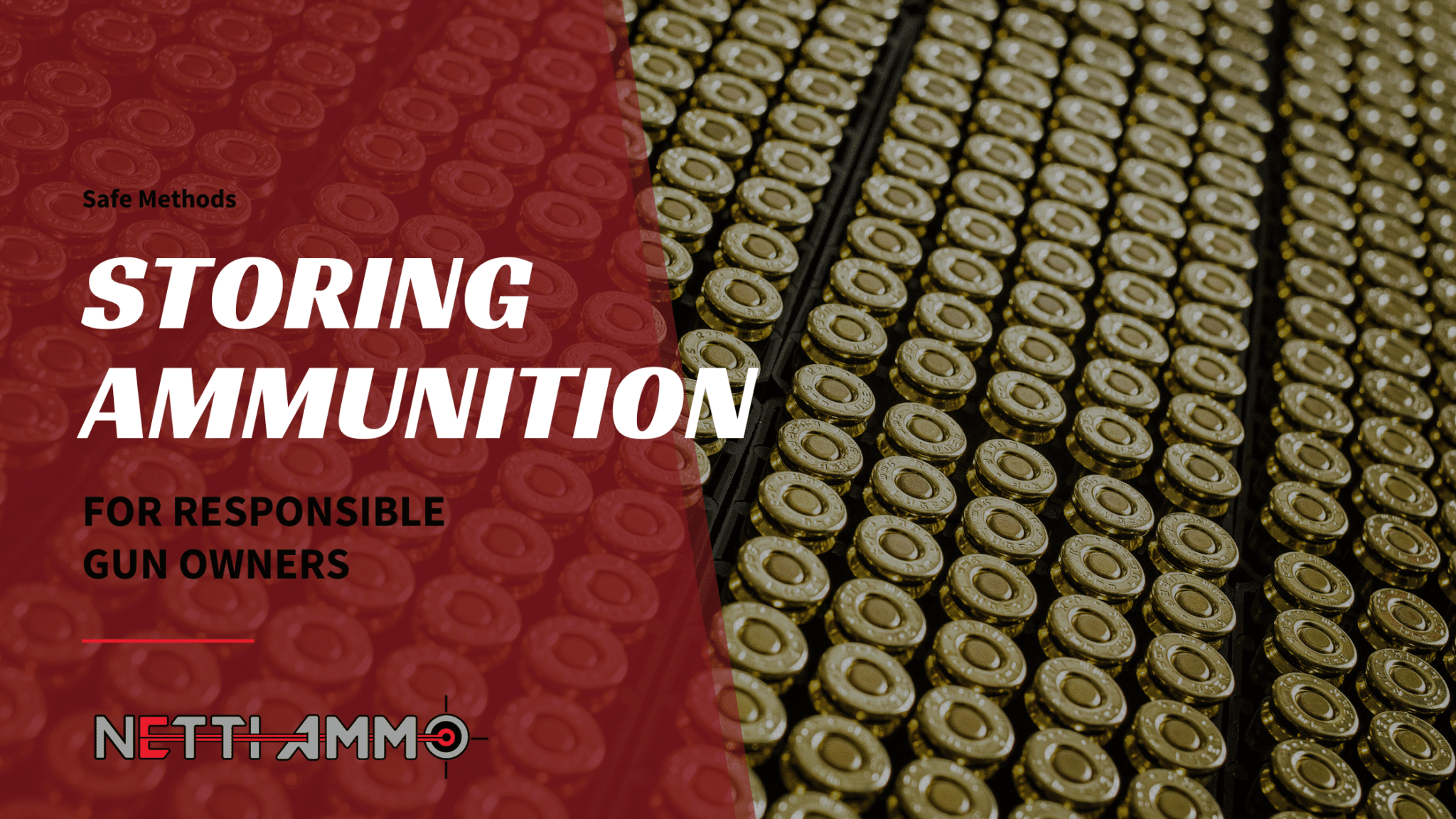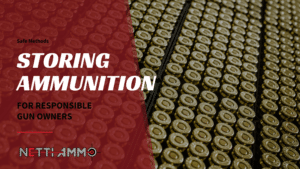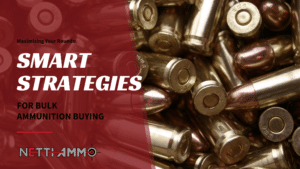Storing your ammunition safely is a crucial part of responsible gun ownership. It ensures the longevity and reliability of your supplies while also protecting your household and preventing unauthorized access. Secure storage is not just a matter of practicality; it is also a legal requirement in many places. To follow safety regulations and maintain the integrity of your ammunition, it’s vital to understand the best practices for storage.
Security is at the forefront of proper ammunition storage. Ammunition should be kept in a controlled environment to prevent theft, use by unauthorized individuals, or damage due to environmental factors. This often involves using dedicated ammo storage solutions such as lockable cabinets, safes, or storage rooms that are designed to be tamper-resistant and durable. It’s important that you choose a solution that matches the size of your stockpile and your personal security needs.
Understanding the specific requirements for the safe storage of ammunition can extend its shelf life and ensure it remains in good working order when you need it most. Factors such as temperature, humidity, and organization play critical roles in preserving the quality of your ammo. By being knowledgeable about these factors, you solidify the confidence in the safety and readiness of your ammunition supply.
Understanding Ammunition Storage Fundamentals
Proper ammunition storage is vital for maintaining safety and ensuring the longevity of your ammo. The principles of secure storage protect against accidents, theft, and environmental damage.
The Importance of Correct Ammunition Storage
Secure storage is imperative to prevent unauthorized access, particularly from children or individuals who may handle ammunition unsafely. It also helps avoid legal liabilities that can arise from accidents due to negligence. Safe storage maintains the integrity of your ammunition, as exposure to extreme temperatures, moisture, or improper handling can lead to malfunctions.
Protection against environmental factors: Ammunition should be kept in a cool, dry place to prevent corrosion and degradation.
Legal compliance: Ensure you follow local laws and regulations regarding ammo storage to avoid fines and penalties.
Basics of Proper Ammunition Storage
To store ammunition safely, consider following these specific guidelines:
- Use a dedicated storage container: Choose a container designed for ammo storage—often made of metal or sturdy plastic—and that can be locked securely.
- Controlled environment: Store your ammunition in an area with stable temperature and low humidity to prevent rust and primer/powder degradation.
- Organization: Keep different calibers or types of ammo in separate, labeled containers to reduce risks of mixing up ammunition, which can be dangerous.
- Inventory: Regularly check your ammunition stock for any signs of damage or aging and maintain an inventory list.
- Access: Ensure that access to your ammo storage is restricted to authorized persons only.
| Do’s of Ammunition Storage | Don’ts of Ammunition Storage |
| Lock your ammo container securely | Leave ammunition in unsecured locations |
| Keep in a controlled environment | Store near flammable materials or heat sources |
| Label and organize different types | Mix different calibers of ammo types carelessly |
| Maintain an inventory list | Neglect regular inspections |
By adhering to these fundamental principles, you maintain safe and secure storage for your ammunition, reducing risks and ensuring readiness for use when needed.
Choosing the Right Storage Solution
Selecting the appropriate storage options for your ammunition involves considering materials, security features, and environmental controls to preserve your ammo’s integrity.
Ammo Boxes: Plastic vs. Metal
Ammo boxes come in two primary materials: plastic and metal. Plastic containers are lightweight, cost-effective, and resistant to corrosion, which is beneficial in damp environments. However, they may not offer the same level of protection as their counterparts. Metal ammo cans are renowned for their durability and fire-resistant qualities. Typically equipped with a seal, they provide excellent defense against moisture and dust.
Lockable Ammunition Safes: Features to Consider
When evaluating lockable ammunition safes, consider gun safes with robust locking mechanisms. Look for options that include biometric safes, which offer quick access with enhanced security. Additionally, fire-resistant safes contribute an extra layer of protection against extreme temperatures, safeguarding your ammunition in case of fire.
Environmentally Controlled Storage: Regulating Humidity and Temperature
Maintaining control over humidity and temperature fluctuations is critical for ammunition storage. Aim for an environmentally controlled storage solution that can stay consistent within recommended humidity levels (30-50%) and temperature (less than 70°F/21°C). Incorporate a dehumidifier or silica gel packs to manage moisture within the safe. For optimal results, a safe equipped with an integrated humidity control system will ensure that your ammunition remains dry and reliable.
Organizing and Maintaining Your Ammo Stockpile
Proper organization and maintenance are crucial to ensure the longevity and readiness of your ammunition. You must implement a systematic approach to track your inventory and ensure safety while keeping the ammo accessible.
Inventory Practices: Tracking and Rotating Stock
To efficiently manage your ammo stockpile, begin by establishing a tracking system. Create a log, whether digital or on paper, to record details such as acquisition date, caliber, quantity, and brand. Organize your ammunition by caliber and date to streamline this process.
| Caliber | Brand | Quantity | Acquisition Date | Expiry Date |
|———|——–|———-|——————|————-|
| 9mm | BrandX | 1000 rnd | Jan 1, 2024 | Jan 1, 2029 |
| .223 | BrandY | 500 rnd | Feb 12, 2024 | Feb 12, 2029|
For rotating stock, use and replace ammunition starting with the oldest acquisition date. This method prevents degradation and keeps your stock fresh.
Maintaining Accessibility While Prioritizing Safety
Accessibility and safety should go hand in hand. Store your ammunition in a dedicated, locked cabinet or safe, sorted by caliber for easy retrieval. Label each shelf or bin clearly with the caliber and quantity for quick identification.
Example of ammo storage layout:
- Top Shelf – 9mm, 500 rounds
- Labeled bin: “9mm | 500 rnd”
- Middle Shelf – .223, 200 rounds
- Labeled bin: “223 | 200 rnd”
For compact storage, consider using stackable ammo cans that offer portability and efficient use of space. By compactly storing and clearly labeling your stockpile, you manage to keep a neat, organized, and safe environment.
Safety Precautions to Prevent Accidents
Implementing strict safety precautions is critical to prevent ammunition accidents. Safe handling procedures and secure storage are essential practices that you need to prioritize to ensure that accidents and unauthorized access do not occur.
Safe Handling Procedures
When handling ammunition, always ensure that you:
- Keep ammunition dry and cool: Store your ammunition in a climate-controlled environment to prevent degradation.
- Wear protective gear: Use goggles and gloves to protect against potential hazards.
- Follow manufacturer’s guidelines: Each type of ammunition comes with specific handling instructions — abide by them.
Secure Storage Away from Unauthorized Users
Your storage solutions for ammunition must:
- Be locked: Use a dedicated ammunition safe or lockable cabinet that is not easily broken into.
- Limit access: Only individuals who are authorized and properly trained should have the combination or keys to the ammo storage area.
- Inform your household: Ensure that everyone in your home understands the importance of security measures to prevent unauthorized access.
Legal Compliance and Best Practices
Ensuring your ammunition storage methods are legally compliant and adhere to best practices is essential for safety and peace of mind. These guidelines are designed to protect you and those around you by providing a framework for secure storage.
State and Federal Regulations on Ammunition Storage
Different states have their own specific regulations concerning the storage of ammunition. Federal law also plays a role, primarily concerning licensing, transportation, and storage of ammunition for those who sell it.
- Check the ATF guidelines: The Bureau of Alcohol, Tobacco, Firearms and Explosives (ATF) outlines federal requirements. For example, under 27 CFR 555, certain types of ammunition must be stored in locked magazines.
- State level regulations: You must familiarize yourself with the state’s laws where you reside or plan to store ammunition. This could include mandatory storage containers, locking mechanisms, or storage locations.
Record Keeping: Some jurisdictions require records of ammunition sales and storage, which often includes maintaining detailed logs of inventory and sales.
Staying Informed: Best Practices in Ammunition Storage
Adopting industry best practices can further ensure the security and longevity of your ammunition.
- Proper Storage Environment: Store your ammunition in a cool, dry place to prevent deterioration. Humidity and temperature can affect performance.
- Secure Storage Solutions: Use a dedicated ammunition safe or lockable cabinet. This prevents unauthorized access and protects against environmental damage.
- Regular Inspections: Periodically inspect your ammunition storage for signs of damage or deterioration. Discard rounds showing signs of corrosion or other damage.
Safety Education: Stay updated with the latest storage protocols and safety measures by regularly reviewing material from trusted sources such as gun safety courses or firearm associations.






